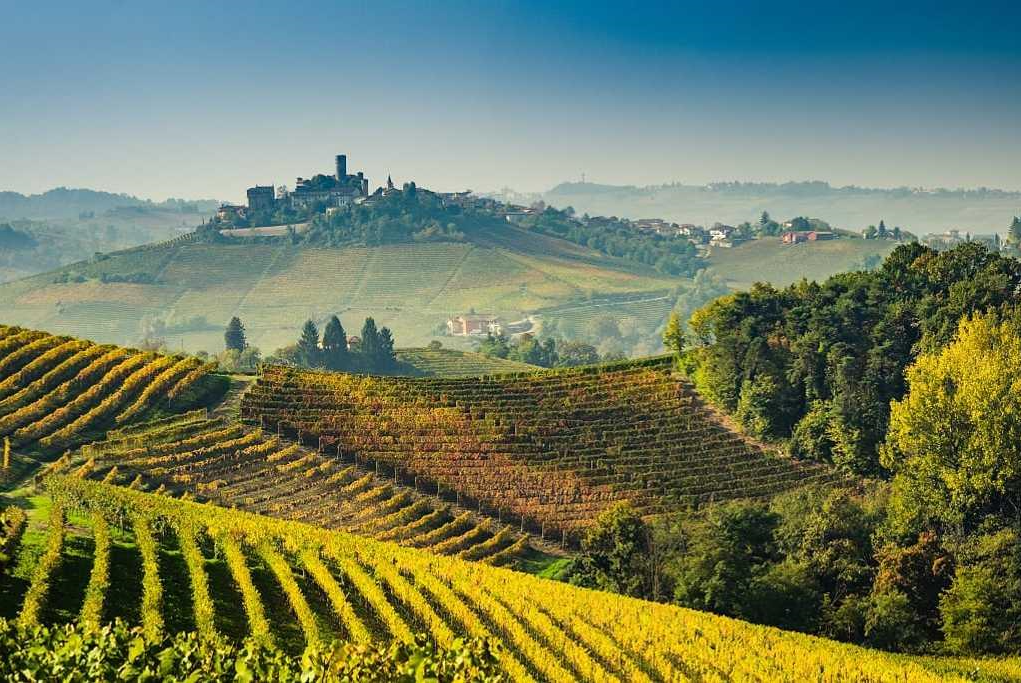
Terroir: A single French word, yet one that carries the weight of centuries, the whisper of landscapes, and the heartbeat of nature itself. It is the essence of a wine’s identity, the invisible hand that shapes every sip and every swirl. To speak of terroir is to speak of the alchemy between land, climate, and the human artistry. Yet, at the center of this intricate symphony lies the grapevine itself, a vessel through which terroir speaks. Let us journey into the sophisticated symphony of terroir, where soil, sun, wind, water, and grape varieties come together to craft the soul of wine.
Every grape variety begins as a whispered promise, rooted in a specific place where earth and sky conspire to create harmony. Over centuries, vines have become poets of their environments, evolving characteristics that reflect their surroundings with vivid clarity. The essence of a grape—its balance of acidity, tannin, aromatics, and ripening rhythm—is shaped by its relationship with the land, the climate, and the contours of its home. Each variety bears its own spirit, its unique way of transforming place into art, much like an artist’s vision finds life through the perfect medium. In the hands of nature, the vineyard becomes the artist’s palette, and the soil beneath it, the enduring canvas.
Beneath the vineyard’s surface lies a world teeming with life and mystery—a repository of ancient whispers and elemental forces. Soil is more than the ground we tread; it is the medium through which vines translate their environment into wine, each type of soil lending a unique dialect to the language of terroir. Limestone and chalk, pale remnants of prehistoric seas, speak of elegance and minerality. They craft wines of crystalline purity, as evident in the poised Chardonnays of Burgundy or the sparkling symphonies of Champagne, where each sip feels like a glimmer of light captured in a glass. Clay, rich and resolute, carries an earthy weight, offering wines boldness and profound depth. Within its nurturing embrace, the Merlots of Bordeaux’s Right Bank take root, their richness a testament to clay’s fertility and strength. Gravel, sunlit and porous, creates wines of intensity and structure. In Bordeaux’s Left Bank, the gravelly terrain shapes the majestic Cabernets, their roots delving deep into the ground’s warmth and wisdom, crafting wines that balance power with precision. Volcanic soils, dark and elemental, are born from fire and ash, infused with the energy of ancient eruptions. These enigmatic soils lend wines a fiery complexity, an unmistakable vibrancy that captures the pulse of the land. From these rugged terrains arise wines of profound tension and character, carrying the earth’s primal story in every sip. On the volcanic island of Santorini, Assyrtiko rules a landscape shaped by ancient eruptions. Its roots plunge into ashen, nutrient-poor soils, and from these meager offerings, the grape produces wines of piercing acidity and mineral brilliance. Saline whispers, zesty citrus, and smoky undertones echo the island’s rugged cliffs and sea-drenched breezes. With each sip, Assyrtiko captures Santorini’s volcanic soul, an unspoken dialogue between land and vine transmuted into liquid poetry.
As vines stretch skyward from their soil-bound roots, they are cradled by the microclimate—a vineyard’s intimate atmosphere, where temperature, humidity, wind, and sunlight converge in an intricate dance. This delicate balance defines the rhythm of the growing season, dictating how grapes ripen, mature, and ultimately absorb the nuances of their environment. It is in this ephemeral interplay between vine and air that the essence of terroir finds its pulse.
In cool climates, time slows, allowing grapes to ripen with measured grace, preserving their acidity and fostering delicate, nuanced flavors. Only varieties with the resilience to ripen fully under shorter seasons and lower temperatures thrive here, becoming storytellers of freshness, minerality, and restraint.
Consider Pinot Noir, the most transparent of all grapes, which reveals the soul of Burgundy’s cool, limestone-laden slopes. Here, the temperate climate coaxes forth its ethereal whispers of cherry, forest floor, and earthy elegance. But Pinot Noir is sensitive to imbalance: too warm a setting dulls its refinement, rendering it heavy and overripe, while excessive cold leaves it thin and expressionless, a muted shadow of its potential.
In the steep, slate-strewn vineyards of the Mosel, Riesling finds sanctuary. The cool air preserves its vibrant acidity, while the reflective shimmer of the river amplifies the sun’s warmth, ripening the fruit just enough. The result is a wine of crystalline purity, singing with lime, green apple, and the unmistakable minerality of its rocky roots.
In warm climates, the vineyard basks in abundant sunshine, enabling grapes to ripen fully and develop bold, opulent flavors. Thick-skinned varieties or those with natural resistance to heat flourish in these conditions, translating the sun’s warmth into richness and intensity.
Grenache, or Garnacha, thrives in the sun-drenched landscapes of Spain and the Southern Rhône. Its affinity for arid climates and resilience to drought allow it to yield wines of ripe strawberry, exotic spice, and a velvety, hedonistic texture. Chardonnay, so restrained in Chablis, transforms in California’s warmth, adopting a tropical persona, offering lush notes of pineapple and mango—a vivid testament to the influence of place.
The phenomenon of diurnal variation, the dramatic swing between day and night temperatures, plays a pivotal role in creating wines of harmony and vibrancy. By day, sunlight drives sugar accumulation; by night, cooling temperatures preserve acidity, tempering ripeness with freshness.
In the high-altitude vineyards of Mendoza, where the Andes cast their imposing shadow, Malbec achieves its greatest expression. At over 1,000 meters above sea level, the grape enjoys intense sunlight by day, fostering lush black fruits and plush tannins, while cool nighttime breezes lock in its freshness. The result is a wine of striking balance, where power meets poise.
Winds, too, shape the vineyard’s character. The fierce Mistral scours the Rhône, drying the vines and intensifying their resilience, while the gentle, salt-laden breezes of Marlborough in New Zealand preserve the zesty, herbaceous vitality of Sauvignon Blanc. Whether fierce or tender, these winds weave themselves into the vine’s story, lending their voice to the wines they touch.
Thus, the microclimate becomes more than the breath of terroir—it is its heartbeat, a vital force that infuses every grape with the rhythms of its environment, ensuring that each glass tells the story of a singular place, alive with its essence.
The vineyard’s orientation to the sun is its compass, determining how its grapes embrace light and warmth. South-facing slopes in Burgundy or the Douro Valley in Portugal gather the sun’s caress, ripening the vines with precision and grace. Meanwhile, vineyards planted on cooler, shaded aspects allow certain varieties—such as Nebbiolo in Piedmont’s foggy Langhe hills—to linger on the vine, developing their haunting aromas of rose and tar.
The sun is a benevolent painter, gilding each vineyard with light and warmth. Too much, and grapes may lose their elegance, becoming heavy and overripe. Too little, and they risk becoming thin and austere. It is in the balance that terroir reveals its mastery.
Take Tempranillo in Rioja, it glows with ripeness, yet the cool evenings preserve its vibrancy, creating wines that balance intensity with refinement. Similarly, the Syrah of Côte-Rôtie thrive in a climate that alternates between sunlight and shadow, producing wines that are simultaneously powerful and perfumed.
Where water meets land, a vineyard finds its equilibrium. Oceans, rivers, and lakes are more than features of geography—they are the silent guardians of the vine, shaping the climate and protecting the grapes.
Rivers, like the majestic Douro or the serene Mosel, serve as mirrors, reflecting sunlight onto the vines and extending the ripening process. The result? Grapes that embody both power and precision.
Oceans and seas, with their cool breezes, temper the heat of summer and soften the bite of winter. Coastal vineyards, such as Sonoma, benefit from this maritime embrace, producing wines that sing of balance and poise.
Lakes, like those of northern Italy, buffer extreme temperatures, nurturing vines that yield crisp, vibrant whites and delicate reds.
Though terroir is rooted in nature, it blossoms under the hand of humankind. The choices of the vigneron—the grape varieties planted, the way the vines are tended, and the techniques employed in the winery—shape the final expression of terroir.
Pruning and canopy management ensure the vines receive the right balance of sunlight and air, while harvest timing determines the precise balance of sugar and acidity in the grapes.
In the winery, the use of oak, fermentation techniques, and blending practices can amplify or restrain the voice of terroir.
At its core, terroir is a dialogue—a conversation between the earth and the heavens, the vine and the human hand. It is what makes a wine taste of its place, capturing the essence of a moment in time, a season, a slope, a breeze. To taste a wine shaped by terroir is to travel, to feel the heat of the Mediterranean sun or the cool mist of a Rhine morning.
The beauty of wine lies in its diversity—a thousand grape varieties, a thousand terroirs, each creating something unique. When a grape finds its perfect home, the result is a harmony of nature and nurture, where the wine becomes a messenger of its place.
It is no wonder that terroir has captivated poets, painters, and dreamers. For in every glass, there lies a story of nature and nurture, art and science, rooted in the soil yet soaring in spirit. Terroir is not just the foundation of wine—it is its soul. The Spirit of Place. Cheers!
